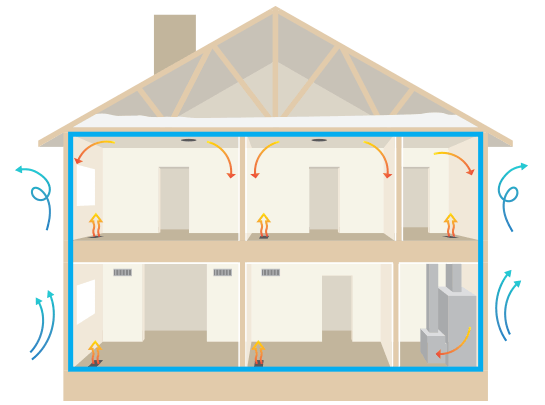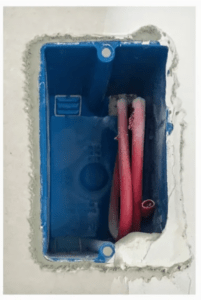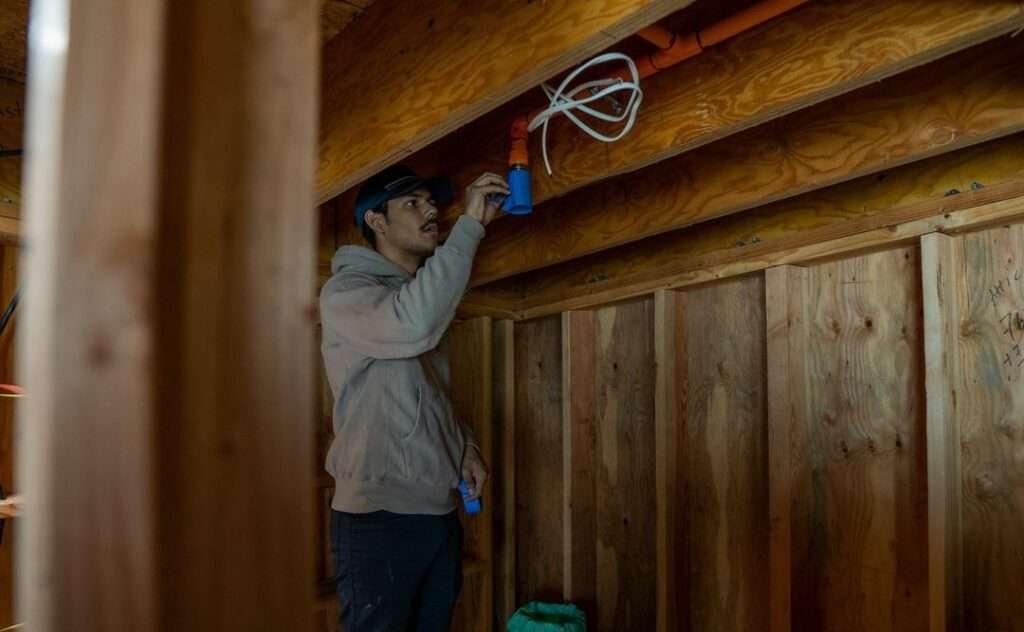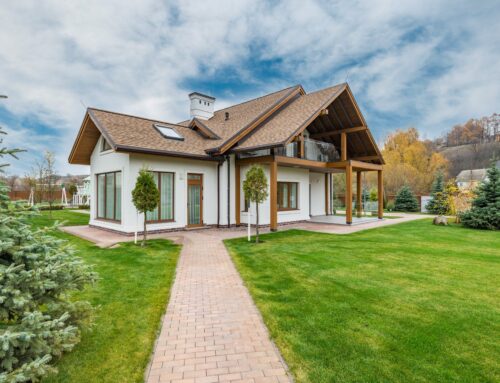
In the pursuit of energy efficiency and improved indoor air quality, homeowners often grapple with the concept of home air sealing. One common question that arises is whether there is such a thing as a home being too tightly sealed. The straightforward answer is no, but with an important caveat – proper ventilation is key. In this blog post, we’ll delve into the myth of homes being “too tight” and explore the importance of balanced air sealing and ventilation.
Dispelling the Myth
Simply put, there is no inherent danger in making a home too tight through air sealing. In fact, a well-sealed home can offer a plethora of benefits to homeowners. Lower energy bills, reduced reliance on HVAC units, and enhanced indoor air quality are just a few advantages of a tightly sealed home. However, the crucial factor here is ensuring that there is a properly designed ventilation system in place.
The Role of Ventilation
Ventilation is the key to striking the right balance when it comes to home air sealing. A tightly sealed home, without adequate ventilation, can lead to a buildup of indoor pollutants, excess moisture, and potentially compromise the health of occupants. It’s not about avoiding a tight seal but rather about implementing a ventilation system that complements the level of air sealing achieved.
 Benefits of a Tightly Sealed Home with Proper Ventilation
Benefits of a Tightly Sealed Home with Proper Ventilation
- Lower Energy Bills: A tightly sealed home reduces the infiltration of outside air, minimizing the need for heating and cooling. This can result in significant energy savings over time.
- Smaller HVAC Units: With less air escaping or entering the home, the HVAC system can be downsized without sacrificing comfort, leading to cost savings and increased efficiency.
- Enhanced Indoor Air Quality: Proper ventilation ensures a constant supply of fresh air while expelling stale indoor air and pollutants. This contributes to a healthier indoor environment.
- Comfort and Consistency: Tightly sealed homes with efficient ventilation maintain a more consistent temperature and comfort level throughout the year.
Addressing Concerns for Ventilation
While it’s encouraged to seal a home as tight as possible, homeowners who are averse to installing ventilation systems need not worry. It is possible to achieve a high level of air sealing without the need for additional ventilation, provided that the sealing is done beyond standard code mandates. However, it’s essential to assess the specific needs and preferences of the homeowner before deciding on the extent of air sealing.
Key Takeaways
In the quest for energy efficiency and improved indoor air quality, the myth of homes being “too tight” can be dispelled. A tightly sealed home is a valuable asset, but it is crucial to emphasize the simultaneous importance of proper ventilation. Homeowners can enjoy the benefits of lower energy bills, smaller HVAC units, and enhanced indoor air quality by striking the right balance between air sealing and ventilation. In the end, it’s not about avoiding a tight seal but about ensuring a healthy and comfortable living environment for all.

Enjoy this post? Read more about some other trending home air insulation techniques being employed to achieve net zero homes.




